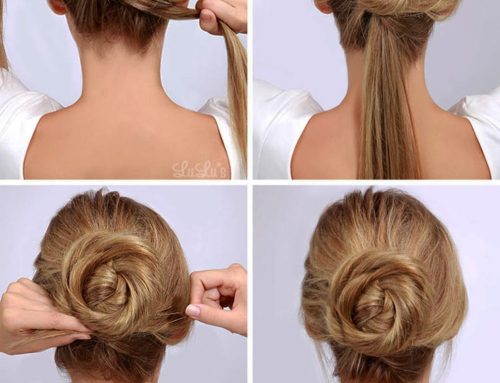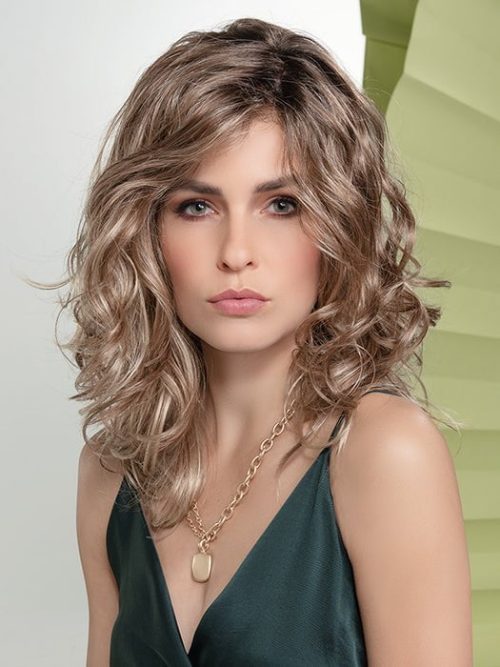Can Braiding Damage Hair? The Truth You Need to Know
Braiding is one of the coolest, most timeless ways to style your hair. From tight cornrows to chunky box braids, it’s a go-to for looking fly while keeping your hair low-maintenance. But here’s the big question buzzing around: Can braiding damage hair? Maybe you’ve heard whispers from friends or seen TikTok videos warning about breakage, scalp pain, or even hair loss. Or perhaps you’re just curious if your fave protective style is secretly a villain in disguise. Well, buckle up, because we’re diving deep into this hairy mystery—way deeper than most articles out there. We’ll uncover the truth, spill some surprising secrets, and give you practical tips to braid smarter, not harder. Let’s get started!
What Happens to Your Hair When You Braid It?
Braiding isn’t just about looking good—it’s a whole process that changes what’s happening with your strands. Picture this: your hair gets woven into tight little patterns, locking it in place. It’s like putting your hair in a cozy, protective hug, right? Well, sort of. There’s more going on under the surface than you might think.
When you braid, your hair gets stretched and pulled. The tension keeps it neat, but it also puts stress on your strands and scalp. If done right, braids can shield your hair from wind, sun, and constant brushing. But if something goes wrong—like braiding too tight or leaving them in too long—things can get messy. Think breakage, split ends, or even a sore scalp that feels like it’s screaming for a break.
The Science Behind It
Hair is made of a tough protein called keratin, and it’s pretty strong. But it’s not invincible. Wet hair, for example, swells up and gets stretchy, making it more likely to snap. Dry hair, on the other hand, holds its shape better when braided. Studies show that wet hair can absorb up to 45% of its weight in water, which weakens it by 12-18%. That’s why braiding wet hair can sometimes lead to more damage than you’d expect.
Fun Fact Fans Love
Did you know braiding goes back over 5,000 years? In ancient Egypt, people rocked braids with beads and gold threads—not just for style, but to show off their status. Imagine that: your braids could’ve made you royalty back in the day!
The Good Stuff: How Braiding Can Help Your Hair
Before we get into the drama, let’s talk about why braiding is so loved. It’s not just a pretty style—it’s got some serious perks. Here’s the scoop on how braids can be your hair’s BFF:
- Protects Your Ends: Loose hair gets rubbed against clothes, pillows, or the wind, causing split ends. Braids tuck those ends away, keeping them safe.
- Low Maintenance: Once your braids are in, you don’t have to mess with your hair every day. Less brushing, less heat, less breakage.
- Locks in Moisture: The overlapping pattern of braids traps moisture better than loose hair. Add some oil before braiding, and your strands stay hydrated longer.
- Boosts Growth (Sort Of): Braids don’t magically make your hair grow faster—that’s a myth. But they do help you keep more length by cutting down on breakage.
A Real-Life Example
Take my friend Mia. She’s obsessed with box braids and swears they’ve helped her grow her hair past her shoulders for the first time ever. “I used to lose so much hair from brushing,” she told me. “Now, it’s all tucked away, and I can actually see it getting longer!” That’s the kind of win braiding fans live for.
The Dark Side: Can Braiding Really Hurt Your Hair?
Okay, here’s where things get real. Yes, braiding can damage your hair—but it’s not the braids themselves that are the bad guys. It’s how you braid, how long you keep them, and how well you take care of them. Let’s break it down:
1. Too-Tight Braids
If your scalp feels like it’s being pulled into next week, that’s a red flag. Super-tight braids put crazy pressure on your hair roots, which can lead to a condition called traction alopecia. That’s when hair falls out from being yanked too hard, sometimes permanently.
- What It Feels Like: A headache that won’t quit or a scalp that’s tender to touch.
- Science Says: Research from the American Academy of Dermatology shows tight hairstyles are a top cause of traction alopecia, especially in textured hair types.
2. Leaving Braids in Too Long
Love your braids so much you don’t want to take them out? We get it—they’re gorgeous! But keeping them in past 6-8 weeks can spell trouble. Dirt, oil, and sweat build up, and your hair gets matted underneath. Plus, as your hair grows, the tension increases, stressing out your roots.
- Fan Secret: Some braiding pros leave tiny “test braids” in hidden spots to see how long their hair can handle it. Sneaky, right?
3. Braiding Wet Hair
Wet hair sounds like it’d be easier to braid, but it’s a trap. It’s weaker and stickier when wet, so tugging it into braids can snap strands or peel off the outer layer (called the cuticle). That’s a fast track to frizz and breakage.
4. Heavy Extensions
Adding synthetic hair to your braids can make them pop, but if they’re too heavy, your roots feel the strain. Imagine carrying a backpack all day—your shoulders would ache, right? Same deal with your scalp.
Traction Alopecia: The Silent Hair Killer
Let’s zoom in on traction alopecia because it’s a big deal—and not enough people talk about it. This isn’t just a little shedding; it’s hair loss that can leave bald patches if you’re not careful. It’s super common with tight styles like cornrows or weaves, especially if you’re rocking them back-to-back without a break.
How It Happens
When your hair gets pulled too hard for too long, the follicles (those little pockets where hair grows) get damaged. At first, you might see thinning around your hairline or temples. Ignore it, and those spots might stop growing hair altogether.
Who’s at Risk?
Anyone can get traction alopecia, but it’s more common with curly or coily hair because it’s naturally more fragile. A study from the Women’s Health Research Institute found it’s a top issue for African-American women who love tight braids or weaves.
Warning Signs
✔️ Red, bumpy scalp
✔️ Hair breaking off at the roots
✔️ Tiny bald spots near your edges
Expert Insight
Dr. Angela Lamb, a dermatologist at Mount Sinai, says, “Traction alopecia sneaks up on you. If your scalp hurts after braiding, that’s your hair begging for a break.”
Wet vs. Dry Braiding: Which Is Safer?
Here’s a debate that’s got braid lovers split: Should you braid your hair wet or dry? Let’s settle it with facts and a little common sense.
Wet Braiding
- Pros: Hair’s more flexible, so it’s easier to section and braid. Some say it looks sleeker too.
- Cons: Wet hair is weaker—up to 80% more likely to break, according to research. Plus, if it stays damp inside the braid, you might get a funky smell or even mold (yikes!).
Dry Braiding
- Pros: Hair’s stronger and holds the style better. Less risk of snapping or stretching it out.
- Cons: Can be trickier to work with, especially if your hair’s super thick or curly.
The Verdict
Dry braiding wins for safety. Towel-dry your hair first if it’s wet, and you’ll dodge a lot of damage. Bonus tip: Spritz a little water or leave-in conditioner to make dry hair more manageable without soaking it.
How Tight Is Too Tight? Finding the Sweet Spot
Not all braids are created equal. There’s a fine line between snug and scalp-torturing tight. So, how do you know if your braids are crossing into danger zone?
Signs Your Braids Are Too Tight
✔️ Pain that lasts more than a day
✔️ Raised bumps or redness on your scalp
✔️ Hair falling out when you touch it
The Goldilocks Rule
You want braids that are just right—secure but comfy. They should feel like a firm handshake, not a wrestling chokehold. If you can’t wiggle your fingers under the braid without wincing, loosen up!
Pro Tip
Ask your braider to ease up near your hairline. Those baby hairs are delicate and prone to breaking if pulled too hard.
Extensions: Friend or Foe?
Braiding with extensions is a game-changer—longer, fuller styles in hours! But are they secretly sabotaging your hair? Let’s weigh it out.
The Upside
- Volume and Length: Instant glam without waiting years to grow it out.
- Variety: Play with colors or textures your natural hair can’t pull off.
The Downside
- Weight: Heavy extensions tug on your roots, stressing them out.
- Buildup: Synthetic hair can trap dirt and oil if you don’t clean it right.
How to Use Extensions Safely
✔️ Go light—choose thinner, shorter pieces.
✔️ Match textures to your natural hair for less strain.
✔️ Take breaks between styles to let your scalp chill.
Fan Hack
Some braid junkies swear by “pre-stretching” synthetic hair. They gently tug it before braiding to loosen it up, cutting down on tension. Genius, right?
Braiding and Hair Growth: Myth or Magic?
Here’s a juicy question: Do braids make your hair grow faster? You’ve probably heard someone say, “My hair grew like crazy after braids!” But is it true?
The Truth
Braids don’t speed up growth—that’s set by your genetics and health. Hair grows about half an inch a month, braided or not. What braids do is protect your ends from breaking off, so you keep more length. It’s not magic; it’s just smart hair care.
Why It Feels Like Growth
When your hair’s loose, you lose bits to breakage every day. Braids stop that, so after 6-8 weeks, you’re like, “Whoa, it’s longer!” Really, you’re just seeing what you didn’t lose.
The Scalp Factor: Why It Matters More Than You Think
Your scalp is the unsung hero of healthy hair. Ignore it, and your braids could turn into a nightmare. Here’s why it’s a big deal—and how braiding plays into it.
Scalp Stress
Tight braids pull on your scalp, cutting off blood flow to your follicles. Over time, that can weaken them. A dry, itchy scalp under braids also spells trouble—buildup clogs follicles, slowing growth.
Keep It Happy
✔️ Moisturize with a light oil (like jojoba or argan) every few days.
✔️ Cleanse gently with a diluted shampoo or witch hazel on a cotton pad.
✔️ Massage your scalp weekly to boost circulation.
Expert Take
Celebrity stylist Madison Dufour says, “A healthy scalp is everything. If it’s screaming under those braids, you’re doing it wrong.”
How Long Is Too Long? Timing Your Braids Right
Braids are low-maintenance, but they’re not “set it and forget it.” Leave them in too long, and you’re asking for trouble. So, what’s the sweet spot?
The 6-8 Week Rule
Most pros say 6-8 weeks is the max for most braid styles. After that, your hair grows out, tension builds, and buildup gets nasty. Fast growers might need to redo them sooner—check your roots for looseness.
Signs It’s Time to Take Them Out
✔️ Itchy scalp that won’t quit
✔️ Fuzzy, matted hair at the roots
✔️ A weird smell (trust us, you’ll know)
Hidden Gem
Ever tried a “braid refresh”? Some fans unravel just the front few rows and re-braid them to stretch the style another week. Sneaky and smart!
Braiding Different Hair Types: Does It Change the Game?
Not all hair reacts to braiding the same way. Your texture—straight, wavy, curly, or coily—plays a huge role in how braids treat you. Let’s break it down:
Straight Hair
- Pros: Easy to braid, less frizz.
- Cons: Slips out faster, less grip for extensions.
Wavy Hair
- Pros: Holds styles well, adds texture.
- Cons: Prone to tangling if not prepped right.
Curly/Coily Hair
- Pros: Grips extensions like a champ, perfect for protective styles.
- Cons: More fragile, breaks easier if overworked.
Tailored Tips
- Straight: Use a texturizing spray for grip.
- Wavy: Detangle with a wide-tooth comb first.
- Curly/Coily: Stretch hair gently before braiding to avoid shrinkage.
The Damage Test: How to Spot Trouble Early
Worried your braids are doing more harm than good? Here’s a quick DIY check to catch damage before it’s too late:
Step-by-Step
- Feel Your Scalp: Press gently. Is it sore or bumpy? Bad sign.
- Check Your Edges: Look in a mirror. Thinning or bald spots? Time to rethink.
- Inspect a Strand: Unravel one braid. Is the hair frayed or snapping off? Yikes.
What to Do
If you spot trouble, take those braids out ASAP. Give your hair a deep conditioning treatment and a week off before restyling.
Latest Research: What’s New in 2025?
Braiding science isn’t standing still. Here’s what fresh studies from 2024-2025 are saying about keeping your hair safe:
- Hair Porosity Matters: A TRI/Princeton study found high-porosity hair (common in curly types) breaks more with braiding if it’s not moisturized first. Low-porosity hair? It’s tougher but still needs care.
- Tension Tracking: New tools measure braid tightness in real-time. Early tests show anything over 2 pounds of pull per braid risks damage.
- Natural Oils Win: Coconut oil cuts breakage by 30% in braids, per a 2024 study. It beats out silicones for long-term health.
Cool Update
Some salons are testing “smart braiding” apps that beep if you’re pulling too hard. Tech meets hair—wild, right?
Your Braiding Survival Guide: Do’s and Don’ts
Ready to braid like a pro and keep your hair happy? Here’s your ultimate cheat sheet:
Do’s
✔️ Prep Your Hair: Wash and condition it first. Clean hair braids better.
✔️ Moisturize: Use a light oil or leave-in before and during the style.
✔️ Go Easy: Keep tension medium—snug, not painful.
✔️ Take Breaks: Rest your hair for 1-2 weeks between styles.
Don’ts
❌ Braid Wet: Wait till it’s dry to avoid breakage.
❌ Overdo Extensions: Skip the super-heavy ones.
❌ Ignore Pain: If it hurts, loosen it or redo it.
❌ Sleep Loose: Wrap braids in a satin scarf to avoid frizz.
Maintenance 101: Keeping Braids Fresh and Healthy
Braids aren’t “done and done”—they need love to stay fly and damage-free. Here’s how to keep them on point:
Weekly Routine
- Cleanse: Mix a little shampoo with water in a spray bottle. Spritz your scalp, then rinse with a damp cloth.
- Moisturize: Dab oil or a hydrating mist on your scalp and braids.
- Protect: Sleep with a satin bonnet or pillowcase—cotton sucks out moisture.
Bonus Hack
Got frizzy ends? Dip them in warm water, then seal with a tiny bit of gel. Instant refresh!
What If Damage Happens? Fixing the Fallout
Oops—your hair’s looking rough after braids. Don’t panic! Here’s how to bounce back:
Quick Fixes
- Trim Split Ends: Snip off the damage to stop it spreading.
- Deep Condition: Slather on a protein mask for 20 minutes, then rinse.
- Lay Off Styles: Give your hair a month to chill with loose styles.
Long-Term Recovery
Eat hair-friendly foods—think protein, biotin, and omega-3s (eggs, salmon, nuts). Healthy hair starts from the inside!
Braiding Confessions: Real Stories from Real People
Fans love the personal stuff, so here’s what braid lovers are saying in 2025:
- Tina, 14: “I braided my hair wet once, and it smelled like old socks after a week. Never again!”
- Jay, 16: “My edges were thinning from tight cornrows, but switching to looser styles saved them.”
- Lila, 15: “I braid with coconut oil now, and my hair’s so soft—my friends keep asking my secret!”
Expert Q&A: Your Burning Questions Answered
Got questions? We’ve got answers from the pros:
Q: Can I braid every day?
A: Nope—daily braiding stresses your hair out. Stick to longer-lasting styles and give your scalp a breather.
Q: Do braids cause dandruff?
A: Not directly, but buildup can. Clean your scalp weekly to keep flakes away.
Q: What’s the safest braid style?
A: Loose French braids or knotless box braids—they’re gentle and still slay.
The Final Word: Braiding Done Right
So, can braiding damage hair? Yup, it can—but it doesn’t have to. It’s all about balance. Braid too tight, too long, or too carelessly, and your hair will throw a fit. But with the right moves—dry hair, medium tension, regular care—braids can be your hair’s superhero, not its kryptonite.
Think of braiding like riding a bike. Too much speed without brakes? Crash city. But ride smart, and you’ll go far. Your hair’s the same way—treat it right, and it’ll thank you with length, strength, and style.
Let’s Talk: What’s Your Braiding Story?
Now it’s your turn! Have you ever had a braiding disaster? A style that saved your hair? Drop your thoughts in the comments—we’re dying to hear! Oh, and if you try any of these tips, tag us on Insta with #BraidSmart. Let’s keep the convo going—your hair deserves it!




